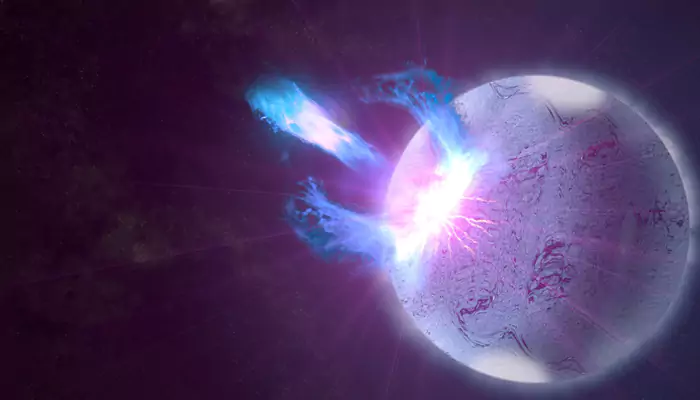
Here are today’s most important updates from the realm of Science and Space.
Spectacular: The partially eclipsed Sun rising over the St Lawrence River in Quebec, captured on March 29. Video by Jason Kurth.
— Corey S. Powell (@coreyspowell) April 2, 2025
(I sped up the footage 4x for the impatient...like myself.)https://t.co/KUSX4RFbUW pic.twitter.com/7tMt02cfKr
(Credit: X/@coreyspowell)
As the Moon covered parts of the Sun on March 29, a breathtaking phenomenon was captured on video over the St. Lawrence River in Quebec, Canada. The footage, taken by Jason Kurth, shows an unusual double sunrise, where two bright spots appear on the horizon, creating a surreal visual effect. The partial solar eclipse provided the perfect conditions for this extraordinary event. As the Moon partially covered the Sun, it created the illusion of two suns rising simultaneously. The alignment of the Sun, Moon, and Earth during an eclipse can create a variety of optical effects, including the appearance of "horns" or "sun dogs," which are bright spots on either side of the Sun.
Check out some brand new biomedical tech – crazy cool, in my own, humble but admittedly biased opinion – introduced in our paper (link below), published today in @Nature, titled “Millimetre-scale, bioresorbable optoelectronic systems for electrotherapy,” where we describe the… pic.twitter.com/fqf9GZTsTY
— John A Rogers (@ProfJohnARogers) April 2, 2025
(Credit: X/@ProfJohnARogers)
Scientists have developed the world's tiniest pacemaker, a temporary heartbeat regulator smaller than a grain of rice that can be injected and controlled by light before dissolving. The US-led team of researchers behind the new device said they were motivated to help the one percent of children born with congenital heart defects who need a temporary pacemaker in the week after surgery. The pacemaker is paired to a soft patch worn on the patient's chest. When the patch detects irregular heartbeats, it automatically flashes light that tells the pacemaker what heartbeat it should stimulate. The pacemaker is powered by what is called a galvanic cell, which uses the body's fluids to convert chemical energy into electrical pulses that stimulate the heart.

In a new research, scientists analysed the frequency signatures of starquakes across a broad range of giant stars in the M67 star cluster, almost 3,000 light years from Earth. Starquakes happen in most stars (like our Sun) that have a bubbling outer layer, like a pot of boiling water. Bubbles of hot gas rise and burst at the surface, sending ripples through the entire star that cause it to vibrate in particular ways. Just as earthquakes help us study Earth's interior, starquakes reveal what lies beneath a star's surface. Each star "sings" a melody, with frequencies determined by its internal structure and physical properties. Larger stars produce deeper, slower vibrations, while smaller stars vibrate at higher pitches.

Earth is the only known planet which has plate tectonics today. The constant movement of these giant slabs of rock over the planet’s magma creates continents – and may have even helped create life. In a newly published paper, scientists revealed the secrets of Earth’s crust 4.5 billion years ago. Earth’s earliest crust – known as the protocrust – that formed during the Hadean eon, would have a chemical composition identical to that of the modern average continental crust, study revealed. It means the distinctive chemical fingerprint of the continental crust was always there – and only recycled at island arcs ever since. This work gives us a new way to think about how continents and life might form on other rocky planets.